Kingdom Animalia Order Coleoptera Subfamily Entiminae Scientific name Otiorhynchus sulcatus Rank Species | Phylum Arthropoda Family Curculionidae Tribe Otiorhynchini Higher classification Otiorhynchus | |
Similar Otiorhynchus, Beetle, Insect, Weevil, True weevils | ||
Otiorhynchus sulcatus
Otiorhynchus sulcatus, commonly known as the black vine weevil or simply vine weevil, is native to Europe, but common in North America as well. It is a pest of many garden plants.
Contents
- Otiorhynchus sulcatus
- Dragonfli ltd vine weevil nematode application instructions
- Overview
- Host plants
- Organic controls
- References
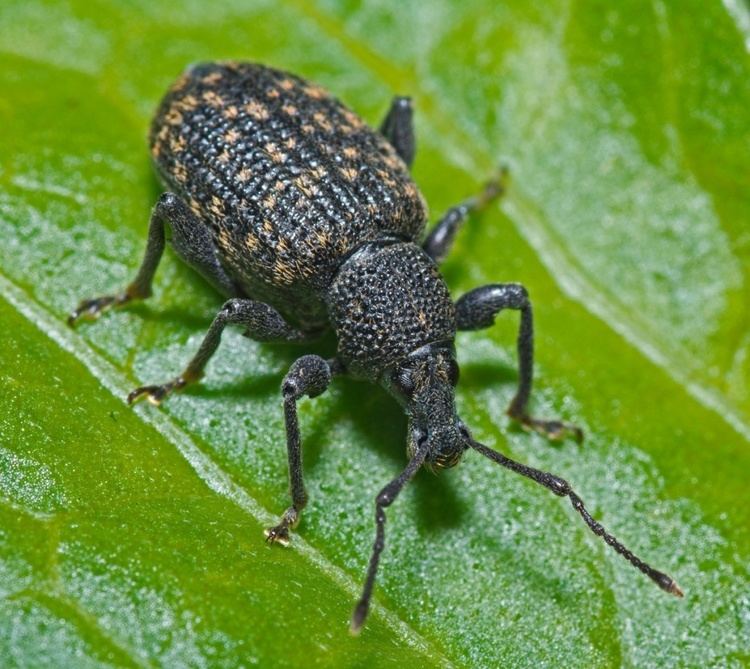
Dragonfli ltd vine weevil nematode application instructions
Overview
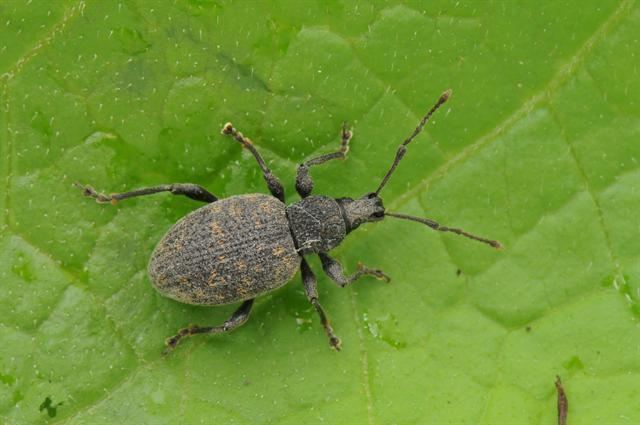
The adult weevil is matte black with fused wing covers, and is unable to fly. It feeds at night on the outer edges of leaves, causing the leaves to have a notched margin. Broadleaved evergreen plants such as Camellia, Rhododendron, Euonymus and Bergenia are particularly prone to damage, although a wide range of different garden plants is susceptible to attack.
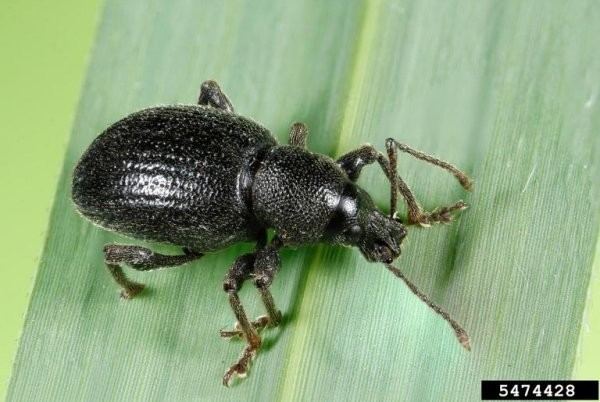
Female weevils have the ability to reproduce parthenogenetically with fertilisation of eggs required to produce males, though no males have been observed. This form of parthenogenesis is known as thelytoky. Grubs grow up to 1 cm in length, have a slightly curved, legless body, creamy-white in colour, with a tan-brown head. They live below the soil surface, and feed on roots and cambium at the base of the trunk. They cause most damage to herbaceous plants, particularly those growing in containers, where root growth is restricted. Severe infestations can result in complete root destruction and hence plant death.
Host plants
The host plants include the following, listed by genus:
Organic controls
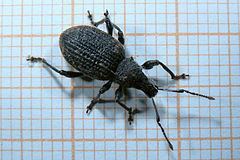
The soil dwelling grubs can be controlled using parasitic nematodes, for example Steinernema kraussei and Heterorhabditis bacteriophora, which can be bought from some garden centres and by mail order. They are simply mixed with water, and watered onto the soil.
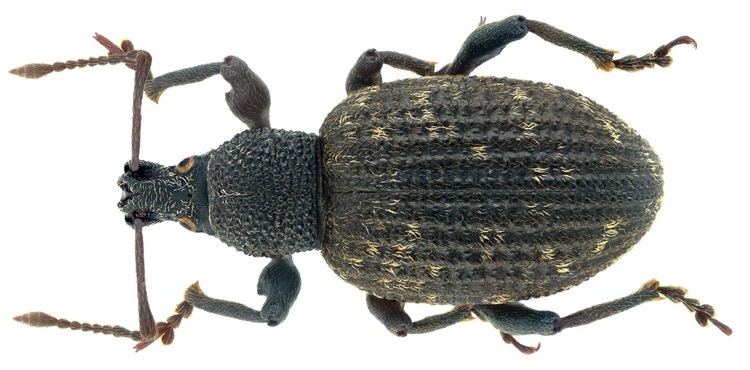
Adult weevils can be controlled by using sticky barriers on the trunks of affected plants, as the weevils return to the soil each day.
Adults can also be manually removed from plants at night when they can be found feeding on leaf edges. Use only a dim torch or candlelight to search by, as they will drop to the ground if startled by bright light.
Adults may also be controlled using the fungus Beauveria bassiana, which is a biocontrol.
